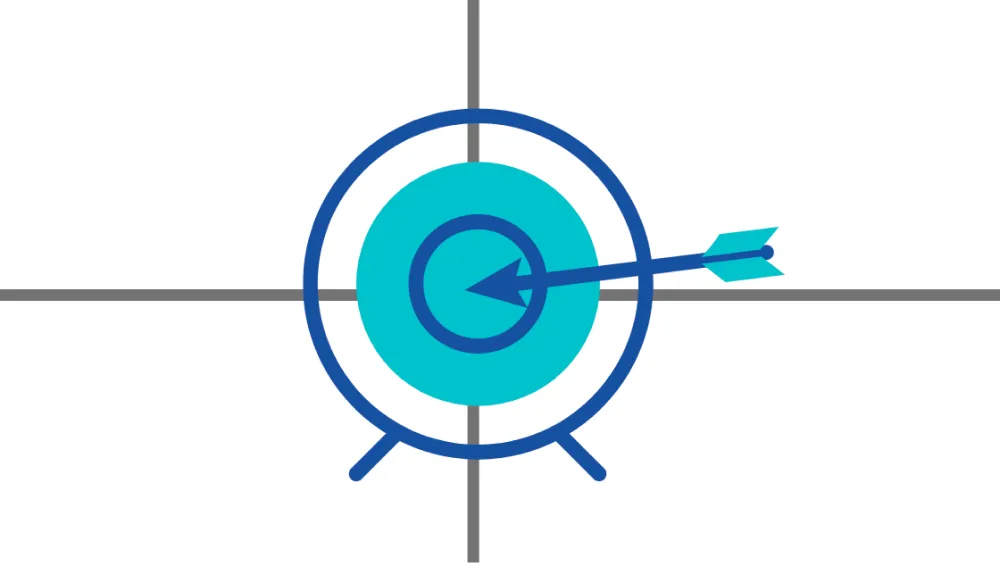Effective planning for your SaaS company's growth will establish your future marketing roadmap, budget and strategy. Because of this, it's important to meet with your executive team about where you can expand revenue. From adding new products to your lineup or expanding your current product into new markets, there are many ways to grow your SaaS market share and find product-market fit.
4 growth opportunities for B2B SaaS providers
Let's explore four strategies that support B2B SaaS growth, and what that looks like in action.
1. Market development: Increasing your market share
Developing the market for your SaaS offering entails servicing the same ideal customer profile (ICP) you’re serving, and offering them more of the same product.
Market development for B2B SaaS companies is all about optimizing the products and services you bring to the market in order to sell more to your existing customers, on top of finding more customers that look like your existing customers.
This is a core growth strategy when you've achieved product-market fit (PMF). For companies under $20-30 million ARR, focusing on market development should be your primary growth strategy.
For example, if you’re in the wine business, you'll transition from selling your current customers 2 bottles of wine/week to 8 bottles of wine/week. Additionally, you can develop your niche wine market by finding more customers that fall inside your existing ICP. Because you know what wine drinkers look like, you can simply expand who you're selling to (and how much you're selling).
2. Market penetration: Expanding your ICP
B2B SaaS companies can also grow their customer bases and ARR by expanding to new markets. In this type of growth strategy, SaaS providers identify new types of customers that might benefit from their current offerings.
Rather than developing new products or services for your existing ICP, market penetration requires going after a new industry you haven’t sold in yet. Market penetration with a SaaS product can also include:
- Targeting larger customers by transitioning from SMB to enterprise
- Targeting a new geography that you haven’t entered before.
- Targeting a new industry or field that can benefit from your offering.
To penetrate new markets, you need significant marketing and sales investment. If you want to gain $1 million ARR from a new industry, you must invest in the proper SaaS strategy, inbound and outbound to reach and win over this new ICP.
For most of the B2B SaaS companies that we work with, market penetration is the most logical path. Once a SaaS venture has achieved product-market fit, they can grow by optimizing their market development, then adding on other industries or markets that can benefit from their offering. Product development isn't required here -- only developing and targeting your newest ICP.
3. Product diversification: Expanding your offering
If you've already exhausted your opportunities from market penetration and development, it may be time to diversify your offerings. This way of growth entails selling your current customers, or current ICP, new products and services. By understanding the needs and wants of your current ICP, you can create products and services for your existing customer base.
If a wine store owner wants to grow through product diversification, they might start selling wine racks, wine openers, and wine coolers. Because if you know people buy wine, they may also need to store that wine.
Product diversification requires less investment in sales and marketing, but more investment in R&D. Developing new products or services, features, or capabilities also typically has a longer timeline, making this something you'd probably do before investing in sales and marketing to market your products.
4. Product development: Pivoting your offering and ICP
Product development isn't easy, and Kalungi sees a lot of companies fail to do this. Product development is also known as a pivot.
For a company selling wine to people who drink wine, product development looks like taking their processes, assets and resources to create and market a different offering and sell this to an entirely new market.
A real-life (and successful) example of product development is the shift Distilleries made in 2020 from creating alcohol to hand sanitizer in response to the Covid-19 pandemic and shortages on medical and healthcare supplies.
For liquor companies and distilleries, this transition from alcoholic beverages to hand sanitizer is a total pivot built on pre-existing capabilities, and offers a new product for a new market.
Plan your SaaS company's growth roadmap in 2024
The growth matrix allows B2B SaaS companies to plan and envision long-term market growth strategies. Once you've planned for your next year of growth, it's time to execute the necessary actions that will allow you to achieve your growth goals.
Set yourself up for long-term success by subscribing to our blog below, and accessing our B2B SaaS marketing playbook. Do things right, the first time.
